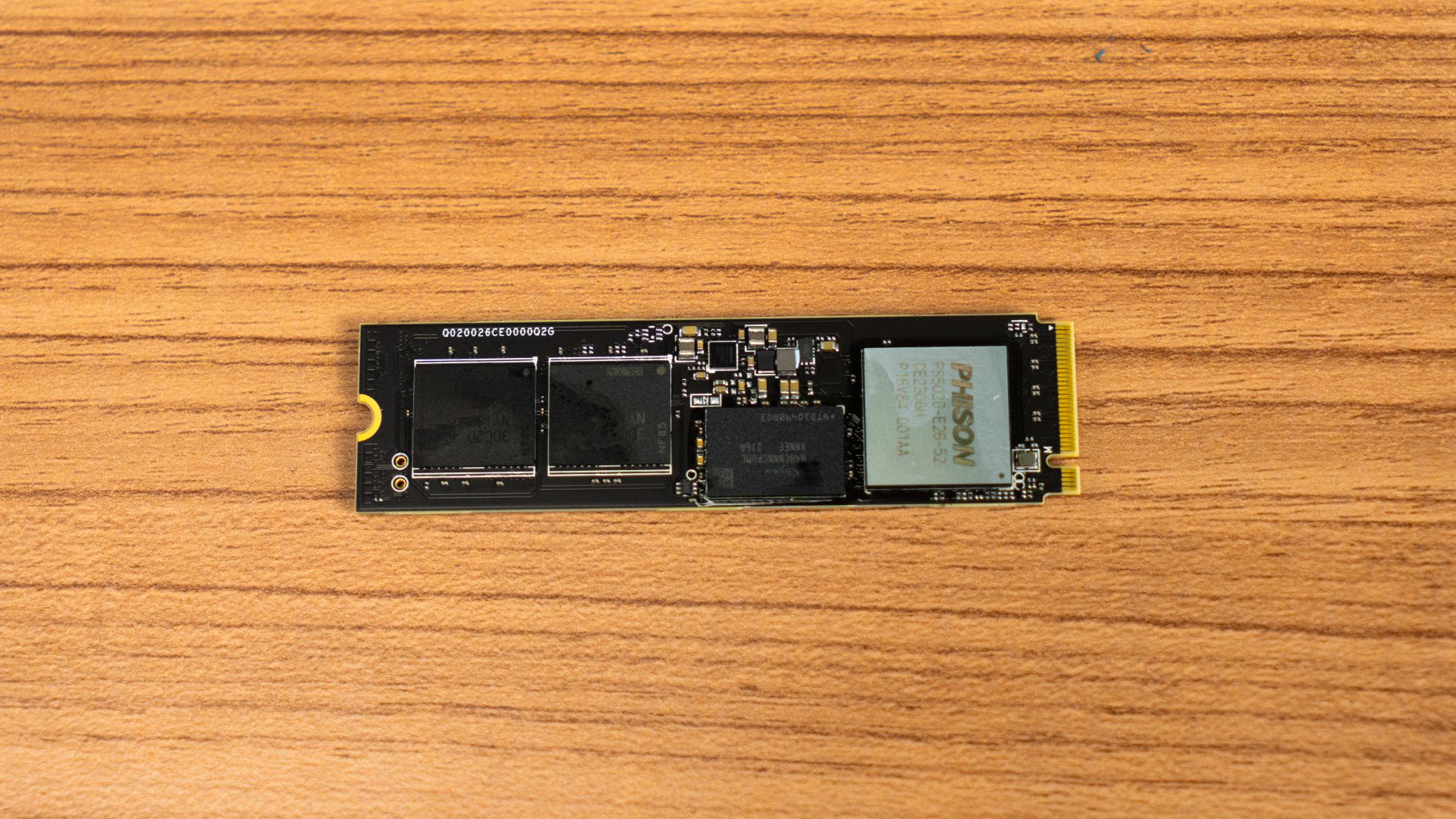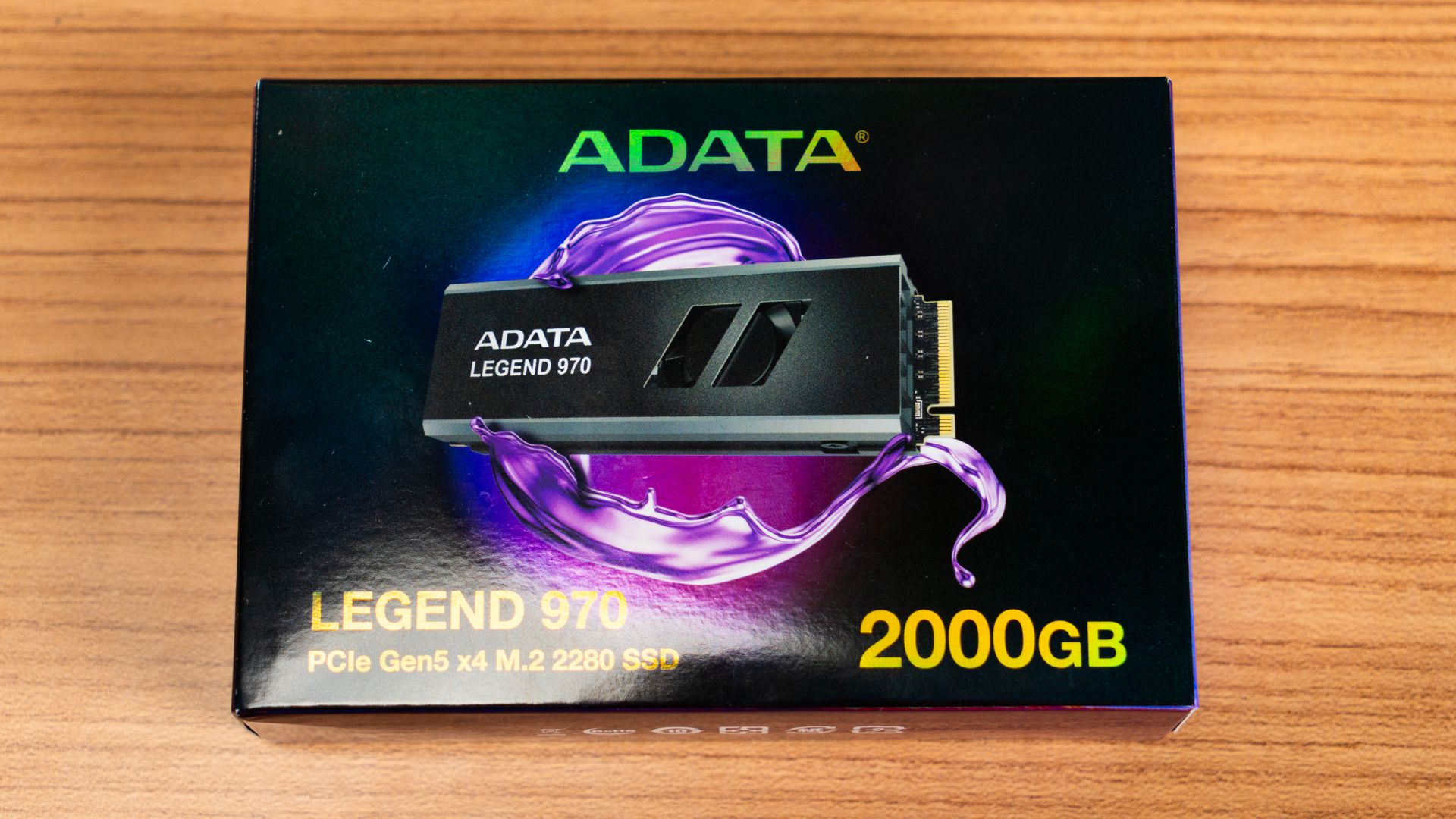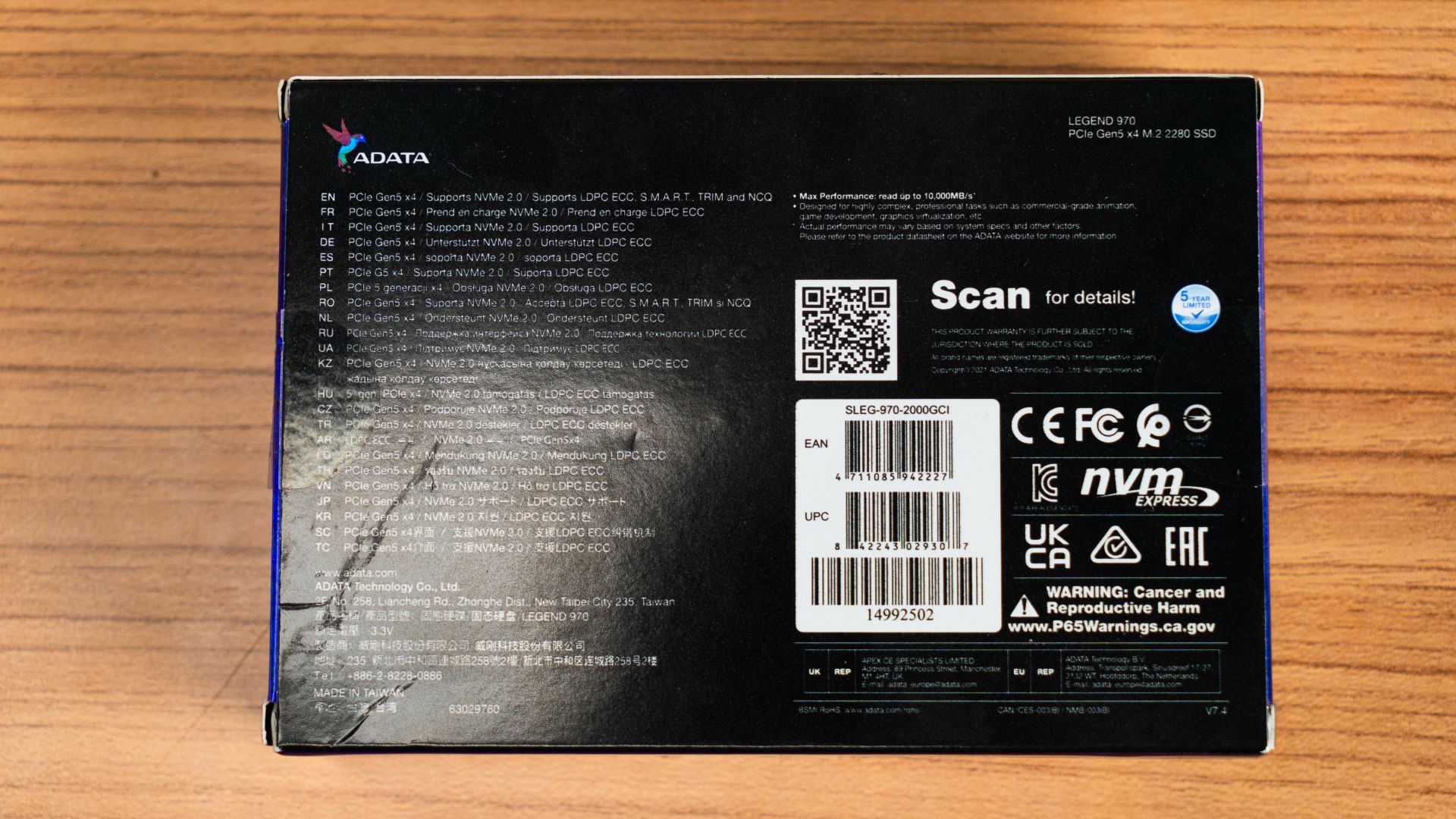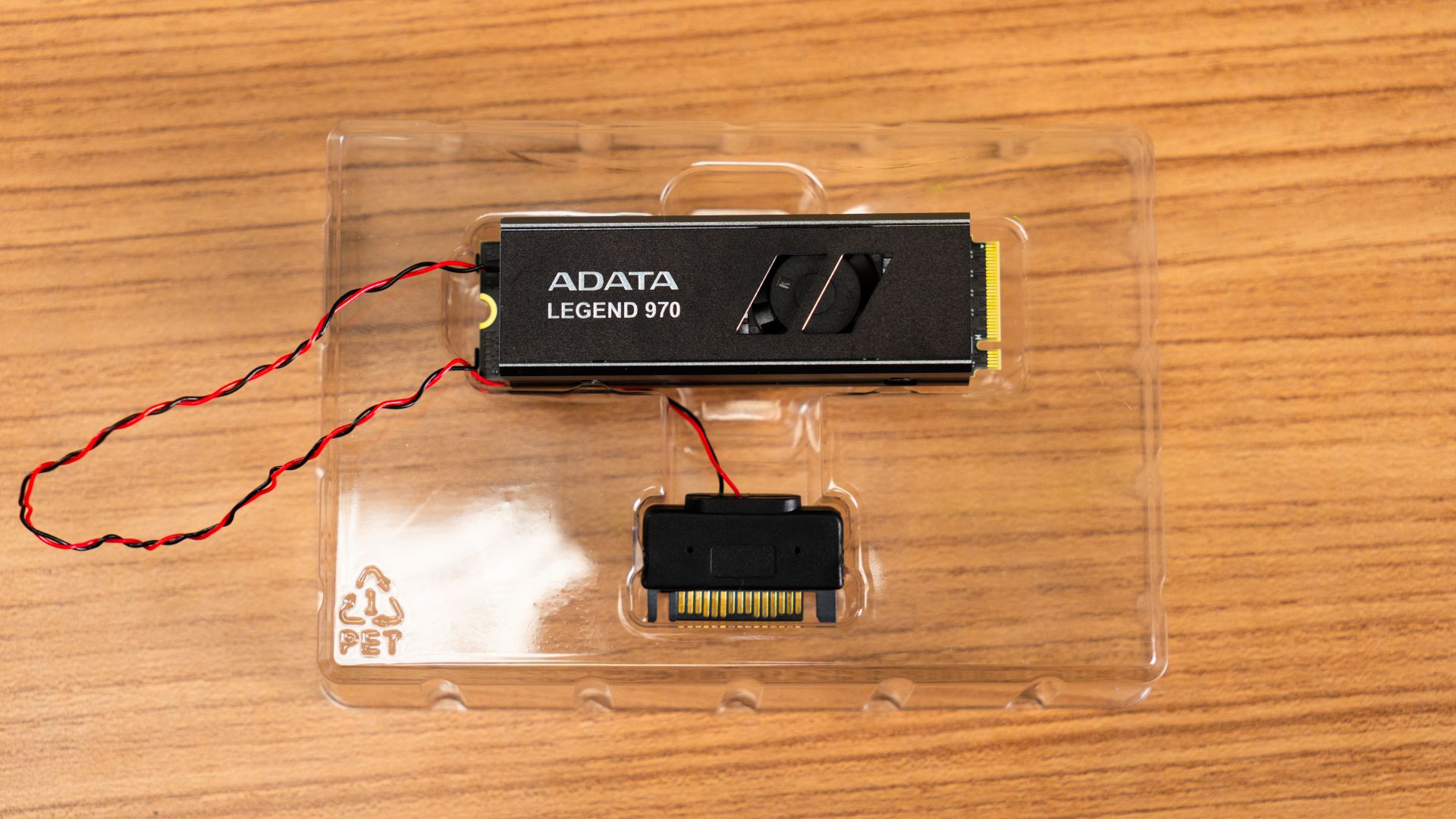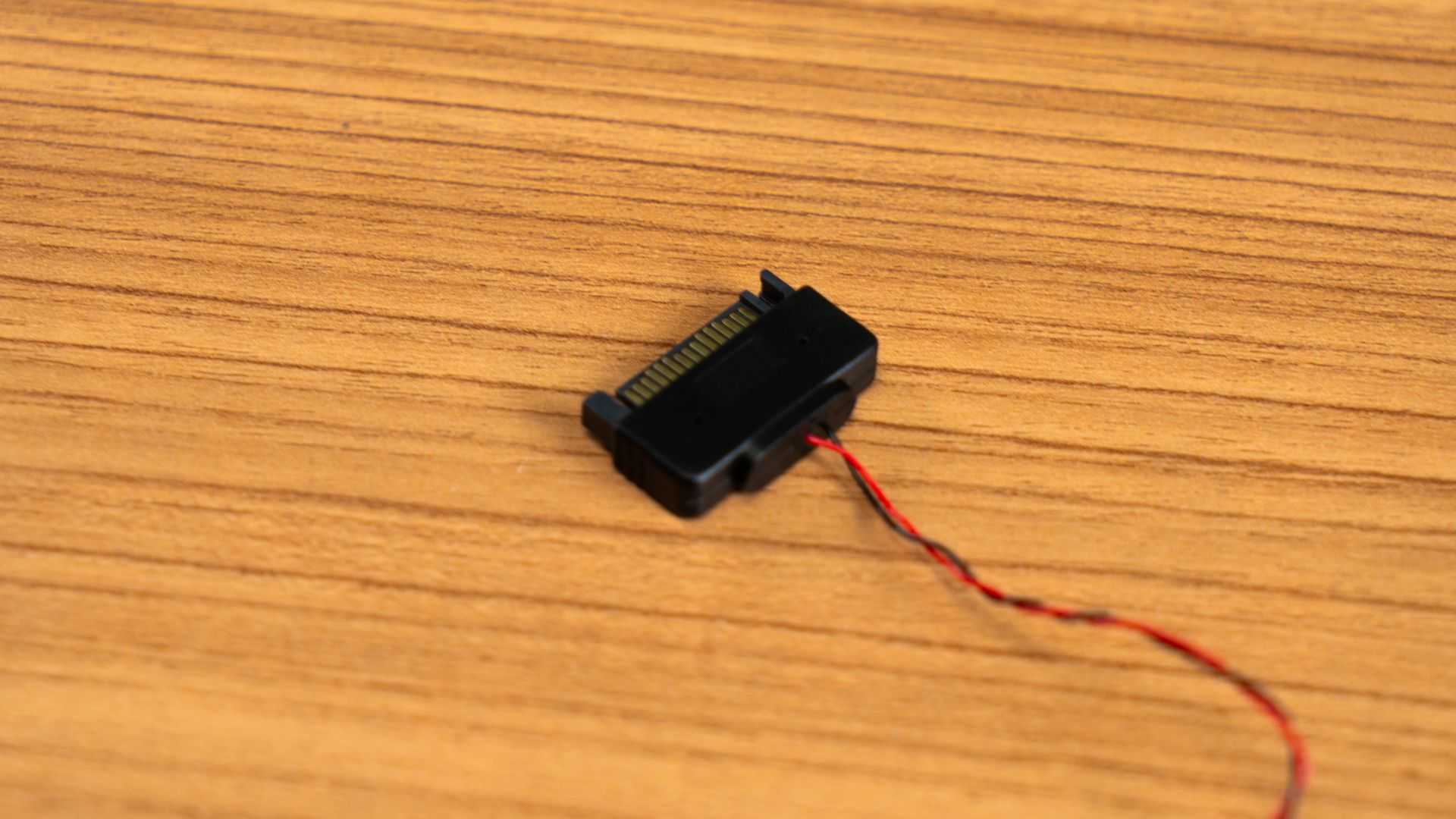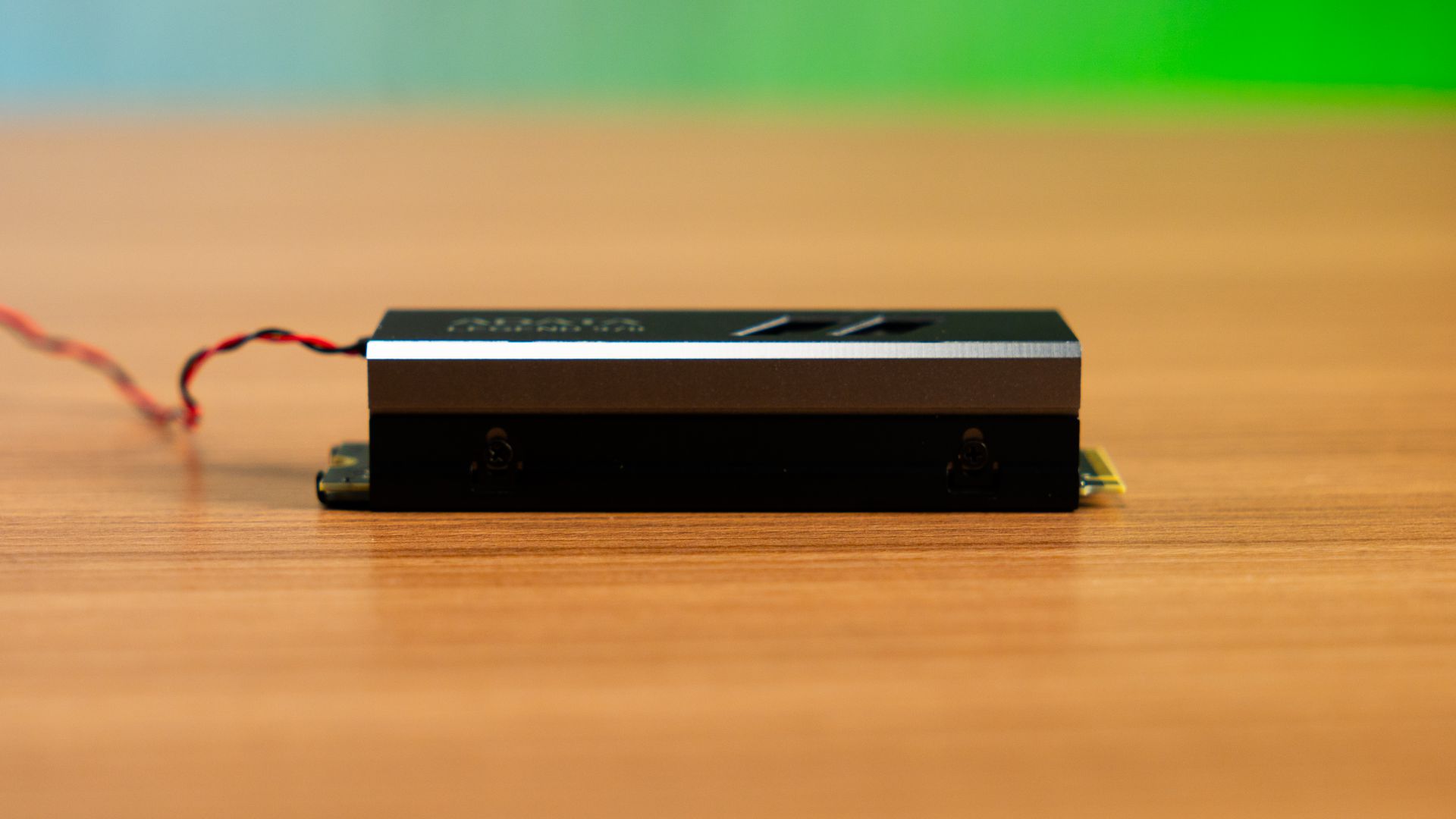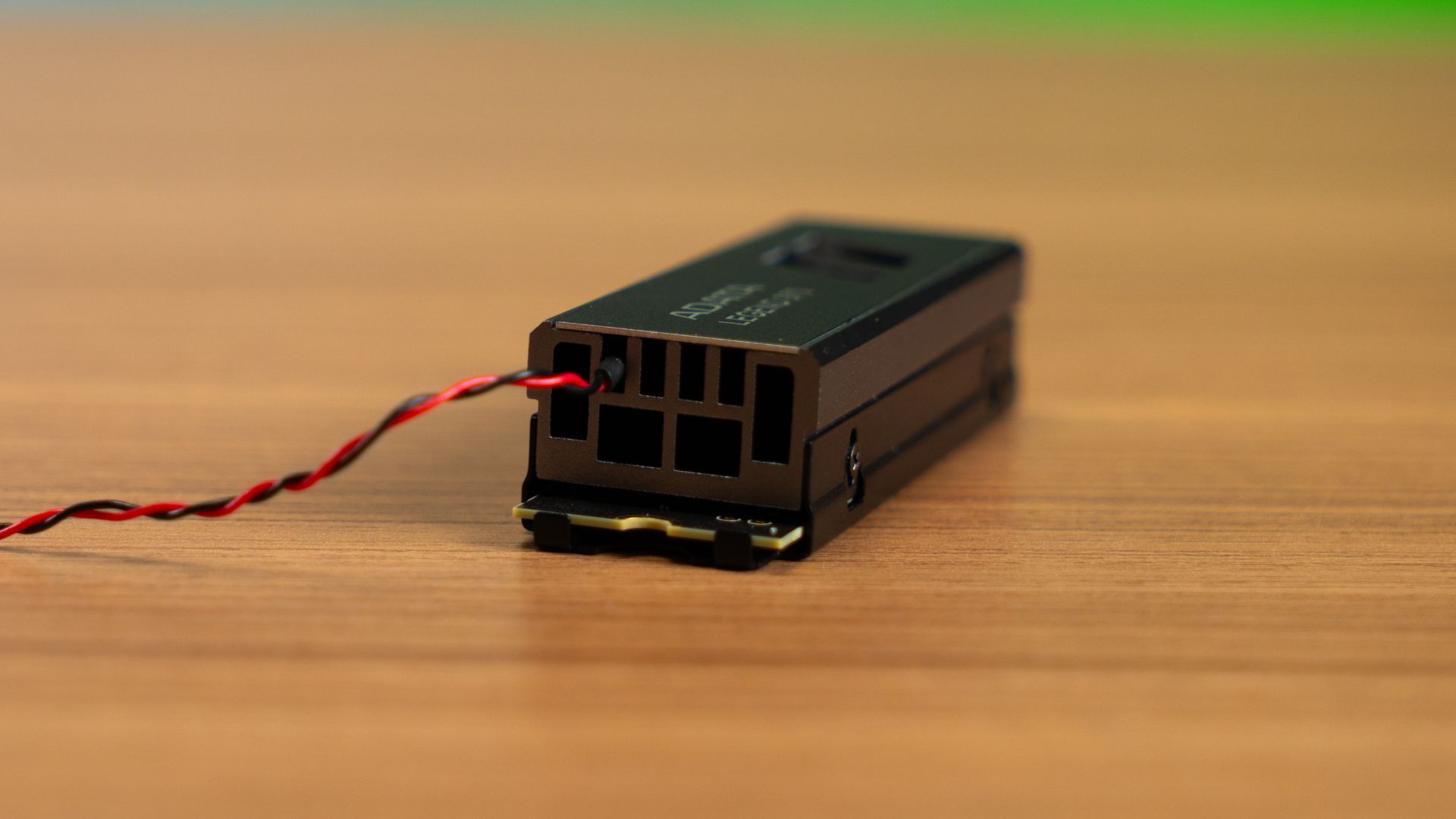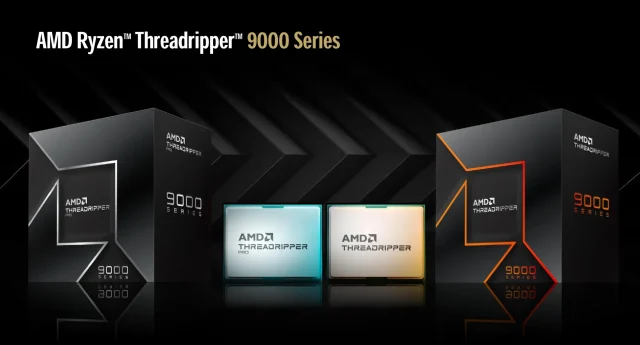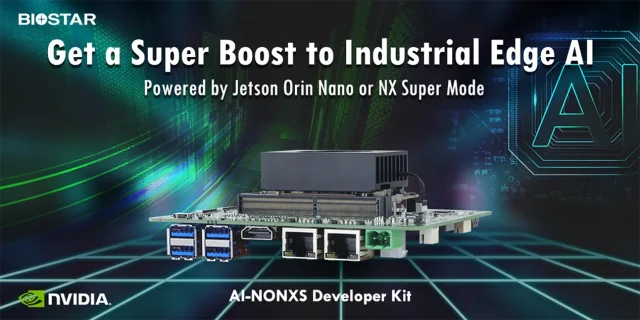Albeit slow, we’re finally seeing PCIe Gen5 SSD making its way to the consumer market. This time, we’ll be taking a quick look at the ADATA Legend 970 2TB PCIe Gen5 M.2 NVMe SSD, which is a rather unique approach by ADATA I must say. While most of the PCIe Gen5 SSDs we’ve seen are mostly equipped with a big heatsink, the ADATA Legend 970 comes with a standard heatsink that has a tiny cooling fan attached.
Video Review
Specifications
| Capacity | 1000GB / 2000GB |
| Form factor | M.2 2280 |
| NAND Flash | 3D NAND |
| Controller | Phison PS5026 E26 |
| Dimensions (L x W x H) | 80.6 x 24.2 x 17.9mm / 3.17 x 0.95 x 0.7inch |
| Weight | 57.1g / 2.01oz |
| Interface | PCIe Gen5 x4 |
| Sequential Read (Max) | Up to 10,000MB/s* |
| Sequential Write (Max) | Up to 10,000MB/s* |
| 4KB Random Read IOPS(Max) | Up to 1,400K* |
| 4KB Random Write IOPS(Max) | Up to 1,400K* |
| Operating temperature | 0°C – 70°C |
| Storage temperature | -40°C-85°C |
| Shock resistance | 1,500G/0.5ms |
| MTBF | 1,600,000 hours |
| Terabytes Written (TBW) | 1,400TB** |
| Warranty | 5-year limited warranty*** |
Unboxing
The Legend 970 ships in a fairly simple box, very similar to the Legend 960 Max that we’ve previously tested but it’s labeled as 2000GB instead of 2TB. The content of the box is just the Legend 970 without any additional accessories included and at first glance, I can already see something that I’m not a fan of – the cooling fan on the heatsink requires SATA power to run. In case you’re planning to use a 3rd-party heatsink for the Legend 970, disassembling and removing the heat sink yourself is considered man-made damage and will not be covered by the warranty. At least that’s what’s stated on the official product page.
As for the components, ADATA decided to use the Phison PS5026-E26 PCIe 5.0 controller this time, paired with 232-layer 3D TLC NAND from Micron, and a 4GB DDR4-4266 from SK Hynix.
Benchmarks
For the benchmark, we’ve tested the Legend 970 using the following specs to eliminate any potential bottleneck:
| CPU | Intel Core i9-13900K |
| Motherboard | ASUS ROG Maximus Z790 APEX |
| Memory | ADATA XPG LANCER RGB DDR5@6000MHz CL30 (16GB x2) |
| Graphics Card | Gigabyte GeForce RTX 4060 Ti Gaming OC 16G |
| Power Supply | Cooler Master M2000 Platinum |
| Primary Storage | PNY LX2030 2TB SSD |
| CPU Cooler | Cooler MasterLiquid PL360 Flux |
| Chassis | Cooler Master MasterFrame 700 |
| Operating System | Windows 11 Pro 64-bit 21H2 (Build 22000.1696); |
We’ve gathered the performance data using commonly used tools like CrystalDIskMark, ATTO Disk Benchmark, and AS SSD Benchmark for the base performance numbers as shown below:
This slideshow requires JavaScript.
From the data, we can see that the Legend 970 can indeed reach an impressive performance of up to 10,000MB/s on both the sequential read and write performance, slightly better than what is listed on the official specifications.
This slideshow requires JavaScript.
Regarding the linear write test conducted with AIDA64, it is evident that the SSD can achieve a write performance of up to 9803MB/s. However, a noticeable decline in performance becomes apparent around the 38-39% point of the test, suggesting that the cache has reached its maximum capacity. The cache clearing process is observed in subsequent tests until approximately the 47% mark, yielding an average performance of 3966.5MB/s for the SSD by the end of the test.
We then redo the test with the SATA power cable disconnected, and we can see the write performance declined rapidly just right after the 12% mark. The write performance then maintained at about 3600MB/s range which was then followed by a short sharp drop before going back up to the 9800MB/s range and then dropped under the 1000MB/s range before the test ended. Clearly, that’s a sign of thermal throttle but just how high did the temperature go before the throttle kicks in?
This slideshow requires JavaScript.
From the temperature reading, the maximum load temperature of the SSD controller when the cooling fan is disabled is recorded at 85°C, which is the temperature where the thermal throttle kicks in. The SSD write performance remains ‘normal’ when we have the cooling fan running, keeping the temperature at around 69°C throughout the test. While the cooling fan is definitely doing its job as intended, the fan is always running at full speed and there’s no way to control the speed, which is rather loud and I consider that as a downside of this coolings solution.
Should you buy the ADATA Legend 970?
Priced at $190 for the 1TB model and $330 for the 2TB model, the cost of the ADATA Legend 970 places it in the higher price range, especially when compared to equally high-speed PCIe Gen4 SSDs of the same capacities. While its performance is undeniably impressive, it’s important to note that optimal results can only be achieved with hardware that supports PCIe Gen5 SSDs; otherwise, the SSD will operate at PCIe Gen4 speeds. Additionally, it’s worth mentioning that for typical gamers and regular users, the advantages of PCIe Gen5 over Gen4 or Gen3 SSDs are not yet apparent for most usage scenarios.
However, individuals engaged in resource-intensive tasks like content creation, involving extensive rendering work and a demand for rapid storage, might find value in this SSD. Nevertheless, utilizing the Legend 970 for such purposes mandates a robust cooling solution due to its intensive workload. While the cooling fan performs its function effectively, potential concerns regarding fan noise and the necessity for external power via a SATA cable should be seriously considered before committing to the purchase of the Legend 970.

Where to buy? (Affiliate links)
Amazon: https://amzn.to/3Rsbs90
Lazada: https://invol.co/cljuusb
Shopee: https://invl.io/cljuusf


